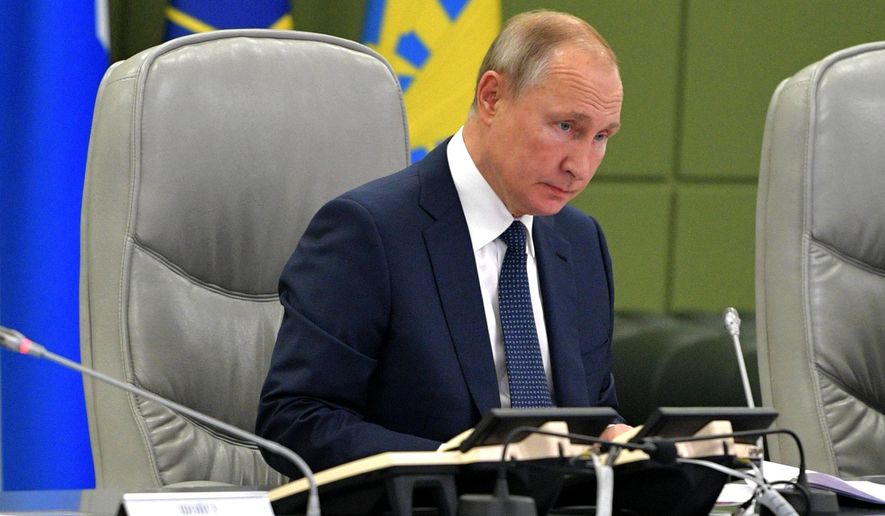MOSCOW — Russian President Vladimir Putin on Thursday oversaw sweeping war games intended to test the readiness of the nation’s strategic forces for a nuclear conflict.
The drills featured practice launches of several intercontinental ballistic missiles as well as warships and strategic bombers firing cruise missiles at test targets - a massive check-up of the land, sea and air components of the nation’s nuclear triad.
The Defense Ministry said the Grom (Thunder) -2019 exercise involved 12,000 troops, 213 missile launchers, 105 aircraft, 15 surface warships and five submarines. Putin directed the maneuvers from the Defense Ministry’s headquarters.
Defense Minister Sergei Shoigu said the exercise was intended to check “the military’s capability to fulfill tasks in an armed conflict and a nuclear war.”
Russia has expanded the scope of its military drills in recent years amid rising tensions with the West. Relations plummeted to post-Cold War lows after Russia’s 2014 annexation of Ukraine’s Crimean Peninsula, and the Kremlin described NATO’s drills near Russian borders as a demonstration of the alliance’s hostile intentions.
Briefing foreign military attaches about the drills earlier this week, Maj. Gen. Yevgeny Ilyin, the head of the Russian Defense Ministry’s international cooperation department, said they weren’t directed against any specific country, but noted that the maneuvers simulated a response to a build-up of tensions near the Russian frontiers.
“The maneuvers’ scenario envisages an escalation of the situation in conditions of a remaining potential for conflict alongside Russia’s borders that poses a threat to sovereignty and territorial integrity of the state,” Ilyin said.
The statement echoed the Russian military doctrine, which states that nuclear weapons could be used in response to a nuclear attack or an aggression involving conventional weapons that “threatens the very existence of the state.”
Earlier this year, the United States withdrew from the 1987 Intermediate-range Nuclear Forces (INF) Treaty, citing Russian violations, a claim denied by Moscow.
Putin criticized the U.S. move, saying it undermined strategic stability. He pledged that Russia wouldn’t deploy missiles previously banned by the INF Treaty to any area before the U.S. does that first.
During Thursday’s drills, Russia’s nuclear submarines launched intercontinental ballistic missiles from the Barents Sea and the Sea of Okhotsk and a land-based Yars ICBM was launched from the military’s launch facility in Plesetsk, in northwestern Russia.
Kalibr cruise missiles were fired by warships in the Black and Caspian Seas, while land-based Iskander cruise missiles were launched from the military’s firing ranges of the military’s Southern and Eastern Military Districts.
As part of the maneuvers, Tu-95 strategic bombers also conducted practice launches of cruise missiles at firing ranges in the Arctic and on the far-eastern Kamchatka Peninsula, the Defense Ministry said.




Please read our comment policy before commenting.